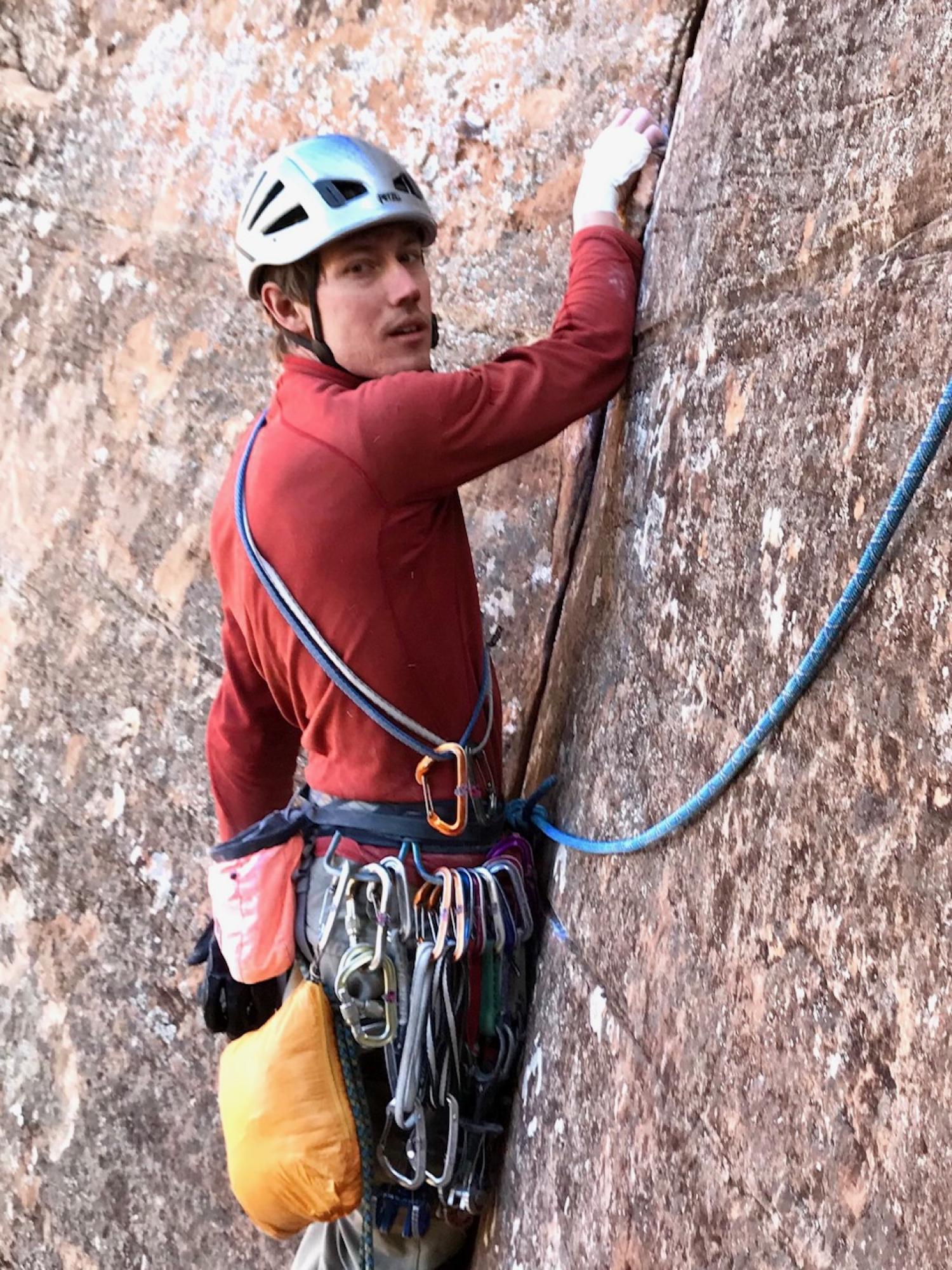Spring 2019 STEMinar Schedule
Current Academic Year (Fall 2018-Spring 2019)
Spring 2019

Speaker: Kaitlyn Garifi
Title: "Designing Algorithms for Grid Responsive Homes"
Department: Electrical, Computer and Energy Engineering
Date: Thursday, February 7th, 2019
Location: Commons Room, Duane Physics Building (11th Floor of Gamow Tower, West Room)
Time: 5:00 pm MST
Many cities, including Boulder, have made a commitment to 100% renewable energy by 2030. But can we still use electricity in our homes like we do currently? For example, if we rely on solar and wind power, can we charge our phones or start a load of laundry overnight when there is no solar power, without thinking about what available electricity we have? This highlights one challenge of meeting our residential electricity demand with only renewable energy. Improving residential electricity use is a powerful avenue for meeting high renewable energy targets since the residential sector consumes more electricity than any other sector (industrial, commercial, and transportation).
For research, I design algorithms to control “smart” homes such that their electricity usage is responsive to the available renewable energy throughout the day. These algorithms coordinate residentially owned appliances by shifting the usage of these appliances to times when there is more renewable energy. Potential appliances include space heating and cooling or scheduling when your dishwasher should run. Electricity usage is coordinated with available rooftop solar, a home battery system, and perhaps an electric vehicle. Utility electricity prices, thermostat temperature setpoints, and current and future forecasts of weather and typical energy consumption are also taken into account. With these algorithms, homes will schedule and coordinate these devices to save customers money and also provide a service to the grid.
These algorithms aim to change the way we use our electricity such that the power grid isn’t being operated to match our needs, but instead our “smart” homes will match our electricity usage to what renewable energy is available.

Speaker: Hanson Smith
Title: "Number Theory, Geometry, Elliptic Curves, and a Piece of the Pie"
Department: Mathematics
Date: Thursday, February 21st, 2019
Location: Commons Room, Duane Physics Building (11th Floor of Gamow Tower, West Room)
Time: 5:00 pm MST
Number theorists are interested in questions about the integers and equations involving them. We will investigate some of these questions; finding they can be deceptively easy to state. One of the tools that number theorists use to answer these questions is the theory of elliptic curves. We will define an elliptic curve and give some intuition for how to think of them. Elliptic curves are amazing objects because they have both a geometric structure and an additive structure. We will work through some examples where elliptic curves have been useful to number theorists.
In the latter part of the talk, we will focus on the points of finite order on an elliptic curve. Using some pies we will give intuition for how these points behave. Our question is: How complicated can these points be? Under suitable hypotheses, we will show that points of finite order on an elliptic curve are as far away from being rational numbers as possible.

Speaker: Lakhan Kamireddy
Title: "AI, Learning and Control in Autonomous Vehicles"
Department: Electrical Engineering
Date: Thursday, March 7th, 2019
Location: Commons Room, Duane Physics Building (11th Floor of Gamow Tower, West Room)
Time: 5:00 pm MST
If you think of traveling in the Bay Area using an Uber or any other ride sharing service, you will find the driver sometimes trying to choose a route that has less traffic and congestion from all the available choices using which you will save some time in reaching your destination. The driver will make this decision based on the real-time delays reported by apps like Google Maps, sometimes taking a second opinion from alternative apps like Waze. Now think of the same scenario, when an autonomous vehicle will be driving you to your destination and not a human driver. Will they be able to make this decision for you and save some time?
Since the self-driving vehicles can interact with each other, we are leveraging the communication that we call as vehicle-2-vehicle interaction in designing a protocol that decides the best possible option among the available routes for each autonomous vehicle to reach their destination. We model and analyze this problem from a gametheoretic perspective and by incorporating real-time vehicle2vehicle interactions, design a protocol to coordinate traffic, due to which the vehicles will maximize their collective payoffs (i.e. they would save some time collectively and reach their destinations safely). We give preference to vehicles based on rewards and penalties they accumulate, which are modeled around various parameters like maintaining safe distance from the vehicle in the front, speed of the vehicle, deviating from the traffic lane into lane for opposite traffic, etc. The theory and analysis that I develop around the vehicle-2-vehicle interactions can be extended to design safer autonomy, which means much less chance of collision, more efficient drives and it can pave way towards modeling human-robot interactions. Once I am successful in developing the theory, I then plan to study the social interactions the autonomous vehicles participate in on a daily basis with human drivers and pedestrians. We anticipate a long journey before there will be a time when every vehicle on the road is autonomous. While we cannot deny the advent of autonomy, to prevent road accidents, what we want to have is a safe and interactive autonomy.

Speaker: Taisa Kushner
Title: "How to Trust a Brakeless Car, and Build an Artificial Pancreas"
Department: Interdisciplinary Quantitative Biology and Computer Science
Date: Thursday, April 4th, 2019
Location: TBD
Time: 5:00 pm MST
Imagine you’re driving a car: you speed up, you slow down, and you avoid crashing into others. Now, imagine you don’t have brakes. Also, your gas pedal is sticky, so you’re never quite sure how much force to use. On top of this, sometimes the car accelerates right away, but other times it could take 20 or 60 minutes. How would you drive & not crash?
In this talk, I will discuss how to build a device, the Artificial Pancreas, which can control such a brakeless “car”, when the “car” is the glucose-insulin regulatory system in individuals with Type-1 Diabetes. The Artificial Pancreas refers to a set of biomedical devices which monitor blood sugar and deliver insulin accordingly. This system presents one of the most promising treatment strategies for management of the glucose-insulin regulatory system, which provides energy to all the cells in the body, but it also has the potential to seriously hurt, or even kill, the patient. We discuss the unique challenges in controlling a biological system, rather than a car, and answer the questions “How can we ensure the device won’t take a harmful action?” and “How do we adapt the same device to work for people who process sugar and insulin very differently from one another?”. Highlights include using real data to create virtual patients, solving large optimization problems, and stress-testing the device by taking kids skiing at altitude.
Speaker: Victoria Stout
Title: "Battitude Adjustment: Understanding the predictors of attitudes towards bats"
Department: Environmental Studies
Date: Thursday, April 18th, 2019
Location: Commons Room, Duane Physics Building (11th Floor of Gamow Tower, West Room)
Time: 5:00 pm MST
Of the 1,300 estimated bat species on earth, over 1000 species are listed as vulnerable or endangered and many of these are threatened by harmful human behavior. Further, bats have incredible ecological significance: they eat disease-transmitting mosquitoes, pollinate at least 800-1000 species of tropical plants and disperse seeds. Unfortunately, bat conservation and outreach efforts may be hindered by fear or negative associations with night, vampires, or disease. This project uses surveys of American adults to explore factors that influence human attitudes about bats (battitudes) and their connection to bat conservation behaviors such as humane home removal of bats or installation of bat boxes. I estimated the following psychological constructs surrounding bats: a) general attitudes toward wildlife, b) bat knowledge, c) likelihood of engaging in bat conservation behavior, d) previous interactions with bats, and e) general attitudes towards bats. Wildlife attitudes and battitudes were assessed using 15 different questions on a seven-point Likert scale that captured various aspects of these constructs.
Wildlife attitudes were significantly and positively correlated with battitudes (rho = .79, p = 1.13e-06) and they significantly predicted battitudes (p=0.00019). This suggests that Americans who feel positively about wildlife will also feel positively about bats, most likely because bats are considered wildlife. However, the slope of the best fit line is less than 1, implying that attitudes about bats may still be affected through instinctual fear or negative cultural associations. Knowledge about bats and was generally low had no effect on attitudes about bats, suggesting the presence of a knowledge-attitude gap. The lack of correlation between bat knowledge and battitudes suggests people don’t need to be educated about the ecology of bats to care about them (or vice versa). Bat interactions also did not emerge as significant predictors of battitudes, though increasing sample size may change this (p = 0.08). Respondents with positive battitudes were more likely engage in behaviors that benefit bat conservation (p = 0.00097). These data give us insight to what influences human attitudes towards bats and their potential to influence behavior and bat conservation. In addition, these findings could be crucially important to inform outreach strategies that are utilized by educators and conservation professionals

Speaker: Sakshi Signh
Title: "Multimode fiber endoscopy for deep brain neural activity detection"
Department: Electrical Engineering
Date: April 25th, 2019
Location: Commons Room, Duane Physics Building (11th Floor of Gamow Tower, West Room)
Time: 5:00 pm MST
One of the most interesting science questions today revolves around the functioning of the brain. While rapid technological advances have enabled detection of neural activity using different methodologies- non-invasive and invasive, they are greatly limited in reachability inside the deep brain structures or neural circuits due to the scattering nature of brain tissue or the large footprint of the probing tool. In this research, we develop a robust, fast, efficient and minimally invasive tool or endoscope, comprising of a single, hundred micron-thick multimode fiber (MMF) that can be used to extract information from inside the brain by injecting carefully shaped light beams into it.
When light travels through a MMF, it is completely randomized. In order to control the light distribution at the MMF output, its input-output relationship needs to be calibrated. This is done by illuminating the MMF with a set of independent patterns and recording their corresponding outputs. After calibration, the light reaching the farther end of the MMF, which can be inserted into the brain and positioned near the area of interest, hits a fluorescent object and produces a fluorescence signal, which is back reflected into the MMF and detected on its near end. A set of such fluorescence feedback signals corresponding to different MMF illuminations allows object recovery using a reconstruction algorithm.
Although this approach works well in a controlled lab environment, implementing it in-vivo, on a moving object poses a major challenge. Any movement of the MMF after its calibration introduces noise in our measurements. Here, I demonstrate a method to choose the MMF modes, which are less sensitive to movement, for imaging, in order to make the system more robust. I also apply a technique called compressed sensing to reduce the number of measurements required for imaging and boost system efficiency and robustness. Moreover, I present a new approach to improve the system speed by over an order of magnitude.

